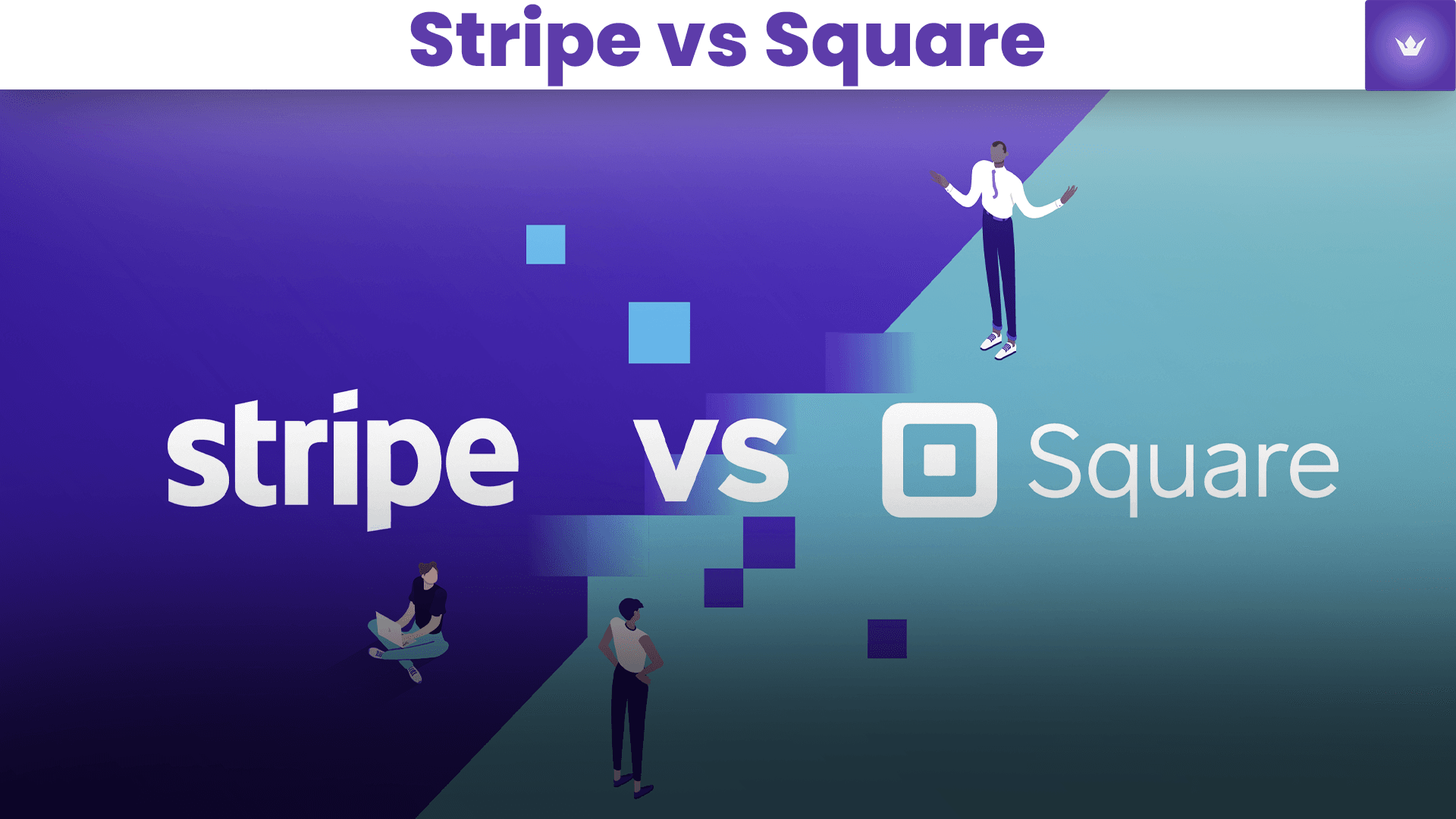Choosing the right payment processor is critical for your business today. With numerous options out there, Stripe and Square continue to stand out as two leading payment providers. Both have significantly evolved by 2025, offering innovative features and competitive pricing, ideal for companies ranging from small startups to established enterprises.
But how do you choose between Stripe vs Square? Don't worry—I’ve got your back! In this comprehensive guide, I'll walk you through detailed comparisons, anecdotes from real-world experiences, and everything you need to know to make an informed decision.
Table of Contents
- Stripe vs Square: Overview and Introduction
- Stripe vs Square: Pricing and Fees Compared (2025)
- Stripe vs Square: Ease of Use and User Experience
- Stripe vs Square: Accepted Payment Methods and Currencies
- Stripe vs Square: Integrations, APIs and Customizations
- Stripe vs Square: Customer Support and Reliability
- Conclusion: Stripe vs Square - Which Should You Choose in 2025?

Stripe vs Square: Overview and Introduction
In 2025, digital payment options have become more diverse than ever. Stripe and Square, two giants in the payment processing market, shape how businesses handle credit card transactions, online payments, point-of-sale solutions, and more.
Stripe, primarily an online payment provider, has grown immensely due to the expansion of e-commerce. Famous for its developer-friendly environment, it is widely known for seamless integrations and great flexibility in customization.
Meanwhile, Square has carved out a robust reputation amongst retailers, restaurants, and smaller businesses, thanks to its simplicity and versatile physical point-of-sale (POS) systems and inventory management capabilities.
In this Stripe vs Square review, we'll closely compare both services based on price, ease-of-use, accepted payment types, integrations, and customer support, complemented by real-life anecdotes and helpful tips.
Stripe vs Square: Pricing and Fees Compared (2025)
Stripe Payment Fees and Costs
In 2025, Stripe continues its straightforward and transparent pricing approach:
- Online payments: 2.9% + $0.30 per transaction
- Instant payouts: 1% additional fee
- Customized pricing available for larger enterprises (volume-based negotiation)
From my experience working with various e-commerce stores, Stripe's pricing model suits well for businesses primarily operating online, providing clear insights into transaction fees without hidden costs.
Square Pricing Structure
Square's pricing strategy remains friendly, especially for small to medium-sized businesses:
- In-person POS: 2.6% + $0.10 per transaction
- Online transactions: 2.9% + $0.30 per transaction
- Hardware costs (e.g. Square Reader, Square Terminal) remain affordable, starting from $49 and upwards depending on your needs.
My Personal Advice: For retail merchants or restaurants, Square's predictable fees make forecasting simpler, offering peace of mind in terms of budgeting and financial management.
Stripe vs Square: Who Wins in Pricing?
It depends entirely on your business model:
- Stripe wins if your volume primarily comes from online transactions or subscriptions.
- Square is advantageous if you rely heavily on face-to-face transactions or hybrid solutions.
Here's a helpful video comparing Stripe vs Square pricing to guide your choice.

Stripe vs Square: Ease of Use and User Experience
Stripe User Experience
Stripe's strength is in customization and flexibility, but it requires some technical knowledge or a capable developer on your team. When I first started implementing Stripe in one of my client's online store, the backend was immensely powerful, yet it came with a bit of a learning curve.
Key Stripe perks:
- Extensive documentation and forums available.
- User-friendly dashboard with detailed analytics and reporting.
- Ideal if you have coding skills or access to a developer.
Square User Experience
Square, conversely, prides itself on ease of use. The setup and onboarding process generally takes less than 20 minutes. Personally, I've seen small local shops effortlessly integrate Square—that’s how intuitive it is.
Square Advantages:
- Incredibly intuitive dashboard and interface.
- User-friendly mobile app.
- No complex coding needed.
Stripe vs Square: Accepted Payment Methods and Currencies
Payment Methods with Stripe
Stripe prides itself on global currency and payment support, featuring:
- Over 135 currencies.
- Various payment methods like Google Pay, Apple Pay, and ACH deposits.
- Cryptocurrency integrations (recently announced feature in 2025).
Payment Methods with Square
Square primarily targets smaller, local businesses, offering support including:
- Major credit/debit cards.
- Mobile wallets like Apple Pay and Google Pay.
- Limited international payment/currency support compared to Stripe.
Choosing Between Stripe and Square in Terms of Payments
Here, Stripe definitely stands out for businesses operating at an international level, offering more payment flexibility than Square.

Stripe vs Square: Integrations, APIs and Customizations
Stripe's Developer-Friendly Nature
Stripe continues being recognized in 2025 for its superb API, leveraging client libraries in various languages (JavaScript, Ruby, Python, Node, etc.). Their documentation is extremely thorough.
From personal experience, Stripe seamlessly integrates with several platforms, including Shopify, WooCommerce, Wix, BigCommerce, and more. If you want customization and integration flexibility, Stripe is your go-to.
The official Stripe API documentation is accessible here.
Square: Simplicity is the Key
Square offers significant integrations too, particularly focused on POS and restaurant management systems. Notable integrations include Wix, WooCommerce, Quickbooks, and Xero.
Square recently upgraded its API capabilities but remains less developer-oriented compared to Stripe.
Stripe vs Square: Customer Support and Reliability
Stripe Support
Stripe provides 24/7 email and chat support, augmented by extensive forums and developer communities. My interactions with Stripe support have always been quick, helpful, and professional—especially handy when you tackle complicated coding or integration problems.
Square Customer Service
Square offers strong support as well, with phone, email, and live chat options. It has significantly improved response time since 2023. Clients often report satisfaction due to clear guidance, tutorials, and troubleshooting resources made available.
Conclusion: Stripe vs Square - Which Should You Choose in 2025?
Choosing Stripe or Square boils down to your unique business needs:
- Opt for Stripe if you operate an online-focused business, require complex integrations, need advanced features for subscriptions or international sales, or have an in-house development team.
- Choose Square if you run physical retail spaces or restaurants, prioritize great in-person solutions, value simplicity, and prefer an easy plug-and-play approach.
From my personal experience helping multiple business owners decide between Stripe vs Square, the correct choice depends directly on your business model, resources, and growth strategy.
Whatever your final decision, both Stripe and Square are solid, reliable, trusted by millions, and capable of effectively scaling with your business in 2025 and beyond.
For additional reading, check out Stripe official site and Square official website.


